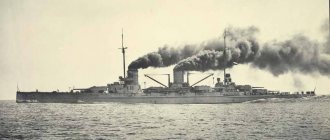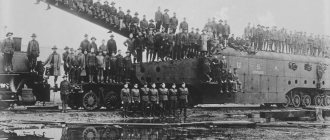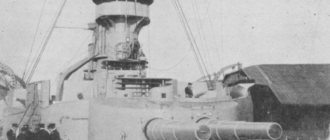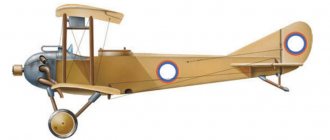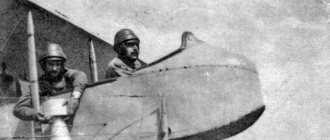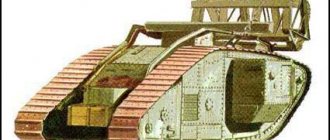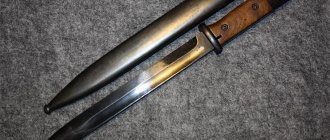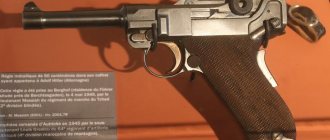The Battle of the Marne, the year of which will be indicated below, is a major battle of German troops against the Anglo-French army. The clash ended in German defeat. As a result of the battle, the strategic plan for the offensive of German troops, aimed at a quick victory and the withdrawal of France from the war, was thwarted. Let's take a brief look at how the Battle of the Marne took place.
Situation before the collision
German troops won the Battle of the Border. They advanced west of Paris, aiming to take the French army into the "cauldron". However, the completion of the operation was complicated by the lack of German forces. The soldiers walked hundreds of kilometers and were exhausted by transitions interspersed with battles. Their communications were stretched, their flanks were open. The command maneuvered units, driving them from one place to another. The commander of the 1st Army, von Kluck, proposed turning east, towards the northern direction of Paris, to hit the enemy in the rear. However, such a maneuver opened up the French right flank. There was nothing to cover it with. The cavalry division and 2 corps, which were initially supposed to be sent to strengthen the advancing units, were sent by Headquarters to East Prussia, to the 8th Army.
Battle of the Marne (1914): background
On September 1, the First Army headed east, north of Paris, in pursuit of the British forces. By the 4th, the latter reached the Marne, crossed the river and, without blowing up the bridges, moved to the southeast. At the same time, the French 5th Army approached from the north. Von Kluck's units, crossing the bridges, continued to pursue the British. On September 3, the chief of defense of the French capital, Gallieni, was informed about the advance of the German army and the vulnerability of its rear and flank. It is worth saying that he had difficulty convincing commander-in-chief Joffre of the need to launch an offensive. Orders were sent from headquarters to the French and British. The latter were commanded by French. He refused to support the French, ordering his army to retreat. However, after a conversation with Joffre, French agreed to a counter-offensive. On September 4, a directive was issued to begin hostilities.
Carpathian operation
Carpathians. Head of the division at the pass. Photo: Public domain. Date: January 7 - April 20, 1915 Russian Empire against Austria-Hungary and the German Empire. It took place at the beginning of 1915 (January-April) and is an example of a rather rare mutual offensive, which logically cost the opponents terrible losses. Hundreds of thousands of Russian, German and Austro-Hungarian soldiers died, were wounded or suffered frostbite. Russia sought to crush and finally remove Austria-Hungary from the war, so it threw almost forty divisions into battle. Strong neighbors came to the aid of the Austro-Hungarians, bringing the total number of combatants to several million. Winter and spring clashes led to a tactical victory for Russian weapons, although the further course of hostilities in 1915 was unsuccessful for Russia.
Map of the Carpathian operation of the Southwestern Front, February 1915. Photo: Andrey Medardovich Zayonchkovsky / Andrey Medardovich Zayonchkovsky (1862-1926) / Public domain.
Counteroffensive
The Battle of the Marne began on September 5. The French attacked the rear and flank of the German First Army. Saving the situation, von Kluck stopped moving east. He withdrew 2 corps from the battle, transferring them to Paris to meet Maunoury’s troops. The Battle of the Marne reached its peak on September 7th. To help the two corps of the First Army sent against Maunoury's troops, von Kluck sent more divisions. The French were effectively defeated. Monuri, in turn, demanded reinforcements. On that day, the Moroccan division reached the French capital. To quickly deliver her to the front, Gallieni used an unconventional approach. One brigade was sent by rail, and the second by taxi. 600 cars made two trips. As a result, reinforcements arrived in a timely manner. Immediately the soldiers rushed into battle. This made it possible to repel the enemy's advance.
Spiral of history: world wars, crises, conflicts
In historiography and popular literature on the First World War, there is a rather persistent myth that the armies of Samsonov and Rennenkampf, advancing in August 1914, saved Paris and France at the cost of their own death.
It just so happens that this view of the death of the Russian armies in the Tannenberg Forest - “but they saved France” - is shared not only by some historians, but is also actively supported by monarchists and representatives of the liberal public.
Especially the latter, because for them, of all the achievements of the Russian army, “saving Paris” is almost the highest value. It doesn’t matter how many Russian lives were lost, how well the offensive was prepared, what actions were in the interests of our country, and not someone else’s - the main thing is that everything is done for the sake of the conditional benefit of the allies, regardless of the real need. Getting acquainted with articles by journalists and publicists, reading interviews with public figures who hold liberal views, one gets the impression that Russians, in their worldview, were created only to save the conditional Paris at the cost of their lives every time. Attack if an ally demands it, obviously putting his interests above his own.
Moreover, the same people, when it comes to the counterattacks of the 41st, call them “senseless.” Attempts to detain the Germans are declared “useless,” and the exchange of human lives for a key resource—time—is “inhumane.” The defense of our cities from the Nazis is an unnecessary whim. So they say the French surrendered Paris (interestingly, here is Paris again) - and the city remained intact, and the people were not harmed.
But as soon as we recall the death of Samsonov’s 2nd Russian Army in the Tannenberg Forest, the answer follows immediately: it was necessary to attack to save Paris, and this obviously justifies any flaws in preparation, organization and, most importantly, losses.
In the author’s opinion, such a position is somewhat inferior - when defending one’s cities is considered akin to a crime, and the desire to fight for one’s land is presented as stupid by throwing corpses at enemies; but when the blood of our soldiers is shed for the sake of France, in their opinion, this deed is certainly correct, pleasing to God.
Understanding this story, unfortunately, in addition to the above-mentioned odious personalities, we will also have to upset those who sincerely believe that the Russian armies did not die in vain. I won’t lie, it was sad for me to realize this, and even though I’m not French and don’t have relatives there, the thought that at least they were helped warmed my soul.
So, the event known as the "Miracle of the Marne".
How did you get to this life?
After a series of oncoming battles, known collectively as the Border, the French armies, having suffered heavy defeats in all sectors, retreated in some disorder along with crowds of refugees to Paris, hot on their heels by the Germans. All attempts to stop the German advance were unsuccessful and entailed new heavy losses.
Having decided not to put the army in parts under the rink of the German offensive, the French command in the person of General Joffre decided to change the strategy of action and accumulate a powerful strike force in reserve on the flank of the advancing German armies in order to deliver an unexpected counterattack.
To this end, by September 2, the newly formed 6th Army was gathering in the vicinity of Amiens with the task of attacking the enemy’s right flank in the direction of Arras.
The English army had to gather across the river. The Somme is ready to attack in a north-east direction. 5th Army in the S. Quentin - Laon area, ready to attack in the direction of Boen. 4th - north of Reims along the river. Ena to advance north.
The Germans partly forestalled the Entente offensive by attacking the unfolding 6th Army and the English expeditionary corps. And if the former got bogged down in heavy battles, the latter essentially retreated, exposing the ally’s flank and were generally close to abandoning France to the mercy of fate, and retreating to the ports themselves, loading onto ships and “suitcase-port-England”.
The key mistake of the German command
The basis of the German forces near Paris were the 1st Army of Alexander von Kluck and the 2nd Army of Karl von Bülow, which, according to the Schlieffen Plan, were supposed to cover Paris in strict cooperation.
Even before the general counteroffensive began, the French launched a series of private attacks in order to gain time and delay the Germans. One of them, on August 28, was the offensive of the 5th French Army against the 2nd German Army.
Kluk, having learned on August 30 that the French in front of him were not staying on the river. Avr, decided to ease the situation of the neighboring army of Bülow to change the direction of his army from the southwest to the south. Then, on August 30, Kluck received a request from Bülow to assist in using the successes of the 2nd Army in an offensive towards the river. Oise on the Compiegne-Noyon line.
With the consent of the high command (in the person of Moltke the Younger), Kluck’s army preferred to the original plan with a wide detour of the French left flank through Amiens, an attempt to press the retreating units together with Bülow to the southeast.
As already mentioned, the withdrawal of the British created a gap between Paris and the 5th Army, into which Kluck rushed headlong. The temptation to finish off the retreating British was so great that to cover his own flank (and the flank of the entire right wing of the front), he allocated only the IV Reserve Corps, over which the French army of Maunoury hung. Kluck, carried away, drove the troops forward so briskly that he overtook his neighbor Bülow, and found himself already south of Compiegne.
This decision in itself already radically changed the original plan of the German command, not to mention the mortal threat to the flank of the entire front, which, in fact, was provided to only one corps.
We didn't wait
On September 4, the commander-in-chief of the French army, General Joffre, issued a directive:
“The risky position of the 1st German Army should be used in order to concentrate the forces of the allied left-flank armies against it.
During September 5th all measures will be taken to launch the attack on the 6th.
By the evening of September 5, take the following position:
All forces of the 6th Army located northeast of Mo should be ready to cross the river. Ourc between Lizy and Mey-en-Multien and attack in the direction of Château-Thierry.
Units of General Sorde's cavalry corps located nearby will be placed at the disposal of General Maunoury.
The English army, turning its front to the east, along the line of Changy - Coulommier, attacked in the general direction of Montmirail.
The 5th Army, pulling towards its left flank and turning around on the Kurtakon - Esterne - Season line, attack in a general direction to the north; II cavalry The corps (General Konneau) must establish contact between the 5th Army and the British.
The 9th Army covered the right flank of the 5th, holding the exits from the Saint-Gonds swamps and having part of its forces on the plateau north of Season.
All indicated armies will begin an offensive on the morning of September 6.”
In addition to the fact that the movement of the armies of Kluck and Bülow deviated from the original plan of the campaign, the forces of the Germans themselves, who had already believed in victory, gradually spread apart. Instead of striking with a fist, it turned out to be a fight with outstretched fingers, and the 1st and 2nd armies themselves were the first to suffer.
Early in the morning of September 6, troops of the 6th French Army attacked the previously left flank barrier in the form of the IV Reserve Corps, and by noon pushed its forward units beyond the river. Terouan. As a result of the fighting, the French established themselves on both banks of the river by evening.
Kluck responded to the threat by ordering the IV Army Corps (not to be confused with the IV Reserve Corps) to move from Douai to La Ferté in order to counterattack the French by dawn on the 7th. Such serious events on the flank led to the fact that he actually voluntarily divided his army into two operationally unrelated parts: a total of 3 corps were allocated to the river. Ourc was two marches away from the main forces, and the remaining two corps (III and IX) were transferred to the subordination of Bülow, who planned to continue the offensive the next day against the 5th French Army.
Hausen's 3rd Army, which was significantly behind them, was also, in turn, divided into two parts, advancing in different directions - partly to the left flank of the 2nd Army, partly to the right flank of the 4th Army. In fact, the German command, of their own free will, did not have any operational reserves in the decisive sector.
Miracle on the Marne
The key point was the shift of Kluck into the zone of Bülow’s army, which allowed Monouri’s army to strike, having only the IV Reserve Corps as opponents. This forced the 1st Army to rush in the opposite direction, to the Urk River, exposing its neighbor’s flank. This is the point of no return, after which the Germans predetermined all subsequent events and partly the final outcome of the Battle of the Marne (the rest was decided by the human factor). Already by September 6, the plan to push the French army away from Paris turned out to be impossible, and the only way out for a further offensive was frontal attacks. The original plan was abandoned by a single decision of the German generals, and in this situation there was no longer any need to save Paris as such.
As the advance of the 6th French Army of Maunoury developed and the main forces of the 1st Army approached, the battle began to take on the character of oncoming battles. The French attack was shot down, and the Germans were preparing to strike back. Kluck needed all possible forces for the decisive attack on September 9 against an already exhausted enemy; To do this, he ordered the III and IX Corps remaining on the flank of the 2nd Army to retreat beyond the river. M. Morin, resulting in a gap between the armies.
The departure of Kluck's 2 neighboring corps to the north weakened the right flank of Bülow's army and created a threat of its envelopment. The right flank of the 2nd German Army began to deviate to the north, further widening the gap between the armies.
The British, who had finally come to their senses by September 9, became more active and directed their attack directly into the gap between the German armies, covered only by a cavalry curtain. The advance of their troops to the rear of the 1st Army became a mortal threat to Kluk, who was entirely occupied with the battle with the Monouri army, and forced Bülow to increasingly bend his flank to the north.
At this moment, awareness of the threat reached the German high command. The human factor in the person of Moltke the Younger, who did not show the proper will to lead the already essentially spontaneously developing battle, played its fatal role - at headquarters they started talking about retreat.
First, Moltke’s delegate, Colonel Hench, went to the headquarters of the 2nd Army, where he was fully imbued with Bülow’s panicky mood, and thus prepared, he arrived at Kluck, where he described the condition of the 2nd Army as extremely deplorable, the general course of events unfavorable, and the retreat 1 th Army inevitable, citing the highest powers granted to Moltke.
By the time the decision to retreat was made, Kluck, who had finally gathered all his forces against the 6th French Army, successfully repelled its offensive and, in turn, delivered a powerful blow near Nanteuil, and the situation was temporarily corrected only by the emergency transfer of a fresh division from near Paris (that the most legendary, for 600 Parisian taxis).
Bülow's left flank, in contrast to the right flank hanging in the air, together with units of the 3rd Army, caused a dire situation for Foch's 9th French Army, and soon the Entente would have to think about how to save the situation, and definitely dismantle its strike group for strengthening the crumbling defense. A gap of 38 kilometers had been made in their front, and the German right wing could only exploit the success.
The British, whose advance created a potentially critical situation, acted extremely sluggishly and incomprehensibly, held back by a German cavalry screen. Considering the pace of their advance, Kluck had every chance by the evening of September 9th to put an end to the offensive impulses of the 6th Army and fully engage the British. The fate of Foch's army also seemed extremely unfavorable.
But Moltke and the panicked Bülow thought differently, deciding to stop the attacks and retreat, despite all the objections of Kluck. On September 9, the withdrawal began - 3 right-flank German armies began to retreat to the north: the 1st Army - to the Lower Aisne, the 2nd - beyond the Marne and the 3rd - to the Marne.
No one even pursued the retreating armies - the Allied command could not believe that the Germans would retreat on the threshold of their own victory.
Russian miracle
The question arises: where is the notorious “Russian factor” in this chain of mistakes? Where is the effect of the offensive of Samsonov and Rennenkampf?
It is believed by both many publicists and some highly respected historians that this effect was the sending of the Guards Reserve and XI Corps to East Prussia. The first of them was seized from Bülow, the second from Hausen's 3rd Army.
What you should know first of all is that the corps, contrary to popular belief, were not withdrawn from the strike group of German troops. They were left as a screen against the powerful Belgian fortress of Namur, while the main forces of the 2nd Army flowed around Namur and advanced further to the west. The last forts of Namur fell on 25 August , and on the same day the Guards Reserve Corps was ordered to advance to the left flank of the 2nd Army, and the XI to join the 3rd Army. However, despite the fact that formally freed, it was impossible to immediately set out for a connection, since the troops still had to be put in order after the assault. The order to send corps to the Eastern Front was issued on August 26 , but the actual shipment began only on the 27th .
At this time, Bülow's 2nd Army was located on the line of the towns of Marbe-Boulogne-Fourmy. The most convenient route from Namur was the roads passing through Philippeville-Courve-Chime, or through Charleroi-Beaumont-Chime. In both cases, in order to join the left flank of the army in the Fourmy area, the Guards Reserve Corps had to cover about 100 km. Considering the average rate of advance of the advancing corps at 20 km per day, the Guards Reserve Corps was already 5 marches behind the main forces, and taking into account the roads clogged with the rear and the readiness to set out no earlier than August 27, it was already 6-7 and, thus, completely could not change the situation on the Marne in any way. To make matters worse, the route through Philippeville had already been allocated for the transfer of the 11th Corps, and the road through Charleroi was used by the 7th Reserve Corps, sent to siege Maubeuge. It was also not possible to transfer troops by rail: the aforementioned Maubezh blocked the railway junction leading to the river valley. Oise from Belgium from Namur, Brussels and Ghent, and the Mezières fortress (Fort Le Seivel) blocked the Namur-Reims railway line, while the bridge at Mezières was blown up by the French on August 25, the day of the fall of Namur). Maubeuge was taken only on September 7th.
At the same time, one should ask the question: on what basis is it concluded that the presence of two corps at the time of the French counter-offensive would have radically changed the entire situation at the front in favor of the Germans? There are many nuances here, starting from how they would be used, and ending with the fact that fundamentally the campaign plan for the Germans was thwarted by the mere fact that the French were preparing a counterattack, which (attacks of the 5th Army) led to Kluck’s turn and exposing the flank to attack 6th French Army, and none of these corps belonged to the 1st Army.
The key mistakes that led to the breakdown of the blitzkrieg and, ultimately, the defeat of Germany in a war of attrition were made at the highest headquarters, which is highlighted quite clearly in this article. The lack of iron will of Moltke the Younger, who became unworthy of his great uncle, the uncontrollable initiative of local commanders and, most importantly, excessive self-confidence in those September days of 1914, cost Germany millions of victims, revolution, Weimar shame and, ultimately , Hitler's rise to power.
The allies were given a royal gift - an open corridor between the armies rushing to Paris; The mere threat of their separation caused the German General Staff to panic and nullify all outstanding successes in other sectors.
Yes, Bülow would have had at his disposal one more corps, which he could have put forward in place of Kluck’s two withdrawn corps. But a corps to replace the two departed is still the same problem of a thin connecting thread between the two armies. Just as the IV Reserve Corps could not independently repel the offensive of the 5th Army, so the conditional Guards Reserve (not the Guards, but a backup Guards Corps) could not withstand the powerful blow of the British, but in fact, as we have seen, it was enough for these purposes and curtains of cavalry - the British were in no hurry to advance.
Or the same corps could have taken up a position on the “bending” flank in exactly the same way and not influence the situation in any way.
Yes, Bülow would have had another corps at his disposal at the junction with the 3rd Army, where impressive results were achieved even without him, and another corps here did not fundamentally solve anything - Foch’s army was already almost a suicide bomber, but it saved it , again, the decision to withdraw was made at German headquarters.
But we were too fixated on the role of the two corps in the overall course of the battle, in which more than 20 corps participated on each side, since the German command itself weakened its armies for much stranger reasons than the successfully developing Russian offensive.
What is noteworthy is that these two corps were, in fact, imposed on Ludendorff, while he was convinced that at this stage he could cope without them, which ultimately happened - the Russian armies were defeated even before the arrival of reserves from the West.
But in addition to the corps deployed against Samsonov and Rennenkampf, two more corps, I Bavarian and XV, were withdrawn to Belgium in anticipation of an imaginary English landing! In addition to them, clearly excessive forces were left against the blocked Belgian fortresses - three more corps. The siege of Givet and Maubeuge alone had to be supported by units totaling an entire corps.
Thus, in terms of the impact on the outcome of the Battle of the Marne, the death of the 1st and 2nd Russian armies is close to the imaginary British landing or blocked fortresses, with the only exception that the forces against the landing were nevertheless withdrawn from the left-flank armies, and in the Battle of the Marne could not participate even theoretically.
The defeat was partly due to the initial planning, when, instead of following the Schlieffen plan with an offensive with a reinforced right wing, the left wing, in the auxiliary direction, began to be pumped up with troops. We are talking about the 4th and 5th German armies, which had the greatest superiority in strength over the French among all the armies, and at the same time achieved the least results, operating in a secondary direction. Which is not surprising, since the 5th Army was commanded by nothing less than the Crown Prince, to whom Moltke did not dare to order, but only gave advice.
The accomplice of the French victory, alas, sat at the German headquarters, and did not fight in the forests of East Prussia. Well, its main creator was in the trenches of the Western Front, and his name was a French soldier. Who withstood the catastrophe of the Border Battle, was able to come to his senses and go on a decisive offensive against the seemingly victorious Germans.
All of the above is in no way intended to belittle the courage of our soldiers, the memory of those who heroically fell at Tannenberg.
But facts are stubborn things: the salvation of Paris was not a consequence of our offensive in East Prussia. Hindenburg and Ludendorff decided the outcome of the battle without reinforcements from the western front, which arrived after the death of Samsonov’s army. The reinforcements themselves were withdrawn from the siege of the rear Belgian fortresses, and would hardly have participated in the Battle of the Marne. They were sent to the East because of the self-confidence of the German command, which believed that it already had enough forces, and the defeat of the French was already a foregone conclusion. And, had it not been for the Russian offensive, the corps could have just as successfully engaged in “repelling” the English landing, like other corps removed from the front.
At the same time, in an attempt to distract the Germans from the Marne, the Russian army lost more than 80 thousand prisoners alone - in an offensive that essentially had no impact on the course of the battles near Paris. The offensive was poorly prepared, without deployed rear forces, until the end of mobilization according to pre-war plans. But did the generals really have a choice if the strategy of the Russian Empire was determined not by the Russian General Staff, but by the French?
————————-
Bibliography:
1) Team of authors - “History of the First World War 1914-1918”
2) Zayonchkovsky A.M. - "World War I"
3) Galaktionov M. - “Paris, 1914”
4) Svechin A.A. — “Russia in the First World War”
5) Novitsky V.F. — “World War 1914-1918.” 1914 Campaign in Belgium and France"
6) John Keegan - “The First world war” (John Keegan - “The Great War 1914-1918”)
7) Kersnovsky A.A. — “History of the Russian Army”
 Oskin M.V. - “Prisoners. Deserters. Refugees."
Oskin M.V. - “Prisoners. Deserters. Refugees."
9) Oskin M.V. - "World War I"
10) B. Takman - “August Guns”
German army gap
The Battle of the Marne continued, and the German troops dwindled. On September 8, Von Kluck transferred 2 more corps to the battle with Maunoury. As a result, the front between neighboring flanks was opened, creating a gap of approximately 35-40 km. Von Bülow could not cover him, since he was fighting at the Saint-Gond marshes. He also had no reserves. The few units that Bülow was able to send to cover the junction with the First Army were quickly thrown back by the French. The British penetrated into the resulting gap. The Battle of the Marne continued with a significant Allied superiority of troops. As a result of the maneuvers, a fairly favorable situation was created for the British. There was only one obstacle in front of them - several cavalry divisions. They could well have struck at von Kluck’s rear or at Bülow’s flank. But the British moved extremely slowly, constantly looking back at the allies. With the slightest resistance from the enemy, they stopped. Meanwhile, their very movement into the breach seriously threatened the integrity of the German troops.
